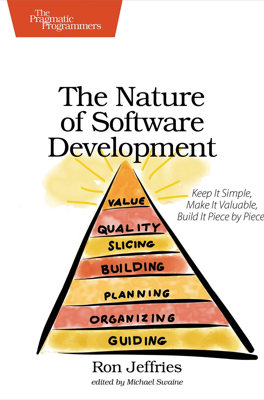Value—How Can We Measure It?
Understanding and Measuring Value in Software Development
Subjectivity of Value: - Value as a Concept: Value is described as a fundamentally subjective concept, essentially defined as "what you want." Emphasis is placed on producing tangible outcomes that can be assessed every couple of weeks through demonstrable and operational software features.
Challenges with Numerical Measurement: - Uncertainty in Metrics: There's an inherent difficulty in quantifying the exact impact or success of a product feature, such as user uptake, satisfaction ratings, or even life-saving impacts. This problem presents significant challenges when trying to measure value using strictly numerical data. - Relative Importance of Features: It’s noted that the true distinction that matters in decision-making is identifying what is crucial vs. what is trivial, not the minute comparisons often suggested by numerical metrics.
Different Types of Value: - Non-comparable Values: Emphasizes that different stakeholders will value aspects of a product in various ways, which can change over time. The need to balance customer feedback, development feasibility, and business incentives often complicates straightforward measurement.
Practical Assessment of Value: - Instinctive Understanding: It's argued that teams and stakeholders typically have an intrinsic understanding of what holds more value in the immediate term. When uncertainty persists, the validity of both potential actions is questioned, often leading to insights that neither option is worthwhile. - Iterative Querying of Preferences: Suggested as a method to explore value dimensions by continuously questioning and justifying why certain features are preferred over others.
Skepticism Towards Numerical Expression: - Questioning Numeric Representations: There's a critical view of trying to encapsulate value in strict numerical terms. Stakeholders are encouraged to critically evaluate any numerical methods they might use and to trust their judgment when discrepancies arise between numerical suggestions and gut feelings.
Impracticality of Monetary Measures: - Limits of Financial Metrics: Monetary metrics are criticized for being lagging indicators that often arrive too late to inform meaningful decision-making. The effectiveness of using revenue as a measure is questioned due to its inability to segregate the complex interplay of market forces, product quality, and customer satisfaction.
Collaborative Value Discovery: - Group Consensus: The chapter supports a collaborative approach where developers and stakeholders jointly decide on the most valuable next steps by consensus. This method not only aligns the team’s understanding of value but also enhances learning through shared decision-making.
Recommendation for Action: - Build, Ship, and Listen: The recurring advice is to build the product features agreed upon, deliver them swiftly, and keen offers feedback from users, thereby fostering a cycle of continuous improvement and responsive development.
This outlined approach encourages a holistic and flexible understanding of value, prioritizing consensus and practical outcomes over rigid and often misleading numerical quantifications.
